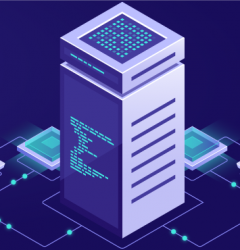
In today’s date, every industry leader is looking at how to transform their business digitally. Digital Transformation in solar industry is no different. Let’s learn how Digital Transformation in the Solar industry and make it shine.
Renewable energy has established itself as the technology of choice for new power generation capacity, and countries worldwide have set themselves aggressive targets, especially in the solar energy sector. India’s renewable energy capacity is projected to grow by 280GW by 2025, accounting for 37% of the total energy supply.
There has been a multifold increase in the number of vendors providing solar installations for both commercial and residential purposes. These vendors are looking for Solar Energy Management Systems that can help improve efficiency, transparency, and productivity in their business processes related to Customer Experience, Site Survey, Inspection Management, Project Planning and Monitoring, and Maintenance and Repairs.
Also Read: 11 benefits of optimizing your Field Services using No-Code!
Benefits of Digital Transformation in Solar Industry
Given the extensive fieldwork involved, the industry requires that most digital solutions be available through smartphones and tablets. Some of the key digital solutions that can be leveraged in various areas are discussed below.
Also read: Business process management – The what, why, and how
User-friendly CRM solution
A CRM solution helps the sales team capture lead details, create follow-up actions and log updates in the system. Once orders are placed, their status can also be tracked in real-time using the CRM. All interactions with the customer throughout the lifecycle can be logged, tracked, and updated through this application.
Accurate requirement-gathering tool
With this tool, the site inspection team can gather information regarding the requirements for the project. Details of the size of the building, number of units, electrical and electronic goods in use, and past billing history can be captured with precision.
Detailed proposal generation and estimation tools
Estimation tools help decide the capacity needed to meet the energy requirements captured by the survey team. Based on the estimation, the tool generates a detailed techno-commercial proposal to share with the customer and the internal design and implementation teams.
Effective inventory and material management
Through this, overall assets can be managed effectively. Features like alerts can be set up to warn about low stock.
Also Read: Digital Transformation in Utilities
Timely quotations and invoice management
This enables the internal procurement team to manage quotations and invoices related to the project’s requirements in a timely manner.
End-to-end project management
This helps track all the project-related tasks, from requirement capture to project implementation and ongoing support.
Real-time energy monitoring
This module integrates with the meters installed on site. With this, the vendor can track the energy production and other maintenance parameters across all their installations while customers can access the same information for their units in real-time. Maintenance tasks can be automatically created in the support system for any issues reported by the monitoring system.
Also read: The Impact of Digital Transformation on Business Performance
Online support and maintenance
This tool helps customers log and track any issues through a mobile application. These tickets are automatically issued to the team based on the nature of the complaint. SMS and e-mail notifications, reminders, and escalations are built in.
Limitations of COTS products
There are multiple COTS available for each application in renewable energy. However, they have limited customization capability, create clutter, and often don’t seamlessly integrate. Without integration, managing and getting value out of these individual solutions becomes difficult.
Traditional development, on the other hand, is time-consuming and expensive, and it doesn’t often yield expected results, as business requirements are most often lost in translation.

How no-code or low-code platforms can help with Digital Transformation in Solar
No-code and low-code platforms allow business users with no coding skills to automate their processes and develop applications as per their requirements significantly faster than the traditional approach. This alternative allows all applications discussed in this article to be developed on the same platform that seamlessly integrates with each other using a single centralized database. In addition to the core applications, the support team can automate their processes, e.g., HR can build an HRMS system, Administration can build a Travel and Expense Management system, etc., on the same platform. Reports and dashboards can be configured to access data across all these applications. Cloud-based installations ensure that businesses don’t have to worry about these digital solutions’ security, scalability, and performance.
Also read: Everything you should know about no-code development
Quixy for Digital Transformation in Solar Industry
Quixy is one such platform that is helping businesses across verticals in their digital transformation journeys. Businesses use Quixy to automate their manual processes and drive efficiency, productivity, and transparency. Get started with our platform, and experience the ease of automated processes and personalized app building.
Sunworks, a solar EPC company, approached Quixy to develop a comprehensive solution that catered to various requirements of its departments. Quixy studied the complexities and began the automation of all processes starting from lead details capture through requirements gathering, estimation, automated proposal generation, identifying the bill of material up to procurement, planning, and installation. Thanks to Quixy, Sunworks achieved a 20% improvement in its sales conversion rate.
Frequently Asked Questions(FAQs)
Q. What defines digital transformation in the solar industry?
Digital transformation in solar involves leveraging advanced technologies like IoT sensors, AI analytics, cloud platforms, and no-code applications to modernize energy generation, distribution, and management processes.
Q. How does digital transformation empower the solar industry?
It streamlines solar panel installation, enhances energy production efficiency, enables predictive maintenance through AI, utilizes no-code tools for analytics, and allows remote monitoring for optimal performance.
Q. Which technologies are pivotal for digital transformation in solar?
Key technologies include IoT sensors for real-time data, AI-driven analytics with no-code platforms, cloud-based systems for remote monitoring, and automation for streamlined operations.
Q. How can solar companies embrace digital transformation?
By investing in IoT-connected systems, implementing AI analytics with no-code integration, utilizing cloud-based monitoring, and fostering a culture open to adopting no-code technology, companies can effectively modernize their solar operations.
Q. What role does data play in digital transformation for solar energy?
Data, collected and analyzed using no-code tools, enables precise performance monitoring, predictive maintenance, and informed decision-making, optimizing solar energy production, storage, and distribution.
Subscribe
Login
Please login to comment
0 Comments
Oldest















